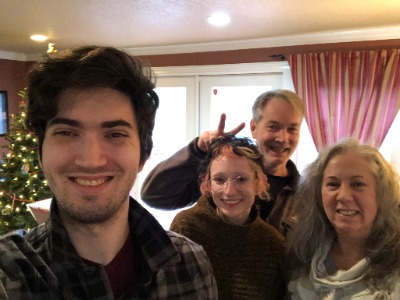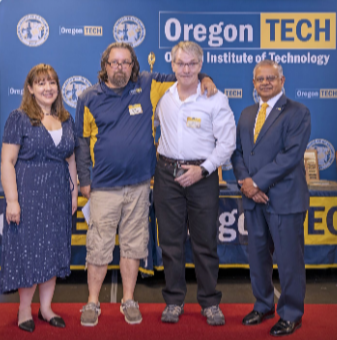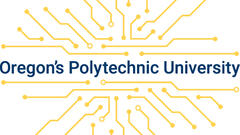Alumni Spotlight - July 2022
John Howard '85

Oregon native John Howard went from being a disinterested math student to playing an essential role in creating the USB (Universal Serial Bus), attributing many of his career opportunities to his connection with Oregon Tech. John grew up in Beatty, Oregon, a small town east of Klamath Falls. As a student at Bonanza High School, John was an average student. He and his brothers were more interested in playing sports, so right out of high school, John enrolled at Oregon Tech to play football. After one year at the Klamath Falls campus, he noticed most of his friends were working, making money, buying cars, and doing the things John wanted to be doing. John left school and joined his high-school friends working for a logging railroad for a few years. When the logging industry experienced financial issues, though, John became unhappy with the evolution to “part-time” employment. John returned to school, influenced by a friend who was graduating from the computer sciences department at Oregon Tech. That friend was Calvin Caldwell, who became a professor at Oregon Tech and still teaches there today!

John returned to Oregon Tech at age 21 and enrolled in the Computer Software Engineering Technology program. After his break from college, the first couple of terms were rough, but John was determined to focus and reconnect. As John jokingly explains, he “was not the sharpest pencil in the box,” but he persevered with the help of professors and classmates. One of John’s professors recommended him for an internship as a technical writer at Tektronix in Vancouver, WA the summer after his junior year. That internship not only guaranteed him a job after graduation, but the company also paid for his senior year of college. John feels that Oregon Tech’s strong reputation helped that become a reality.
After graduating from Oregon Tech in 1985, John worked at Tektronix for a year and started his master’s degree in Computer Engineering at the only institution offering graduate degrees in computer science at the time, Oregon Graduate Institute of Science and Technology (part of the OHSU educational system). Many OIT alumni went through the graduate program together at the same time. Fellow Oregon Tech alumnus John Keith was working at Intel at the time. Through this connection, Intel hired John as a software technician to work on a collaborative project called the Gemini Project between Intel and Siemens, doing groundbreaking work, creating a completely new fault-tolerant computer system. After that project, John transferred to Sequent Computers as a firmware engineer before returning to Intel. He credits his alumni connections at Intel for the opportunity to return, this time as a hardware engineer on the first generation memory controller for the P6 (Pentium Pro) processor.
A few years later, John was recruited to work on a new project at Intel, developing the USB, something he has worked on for many years. John’s work on the USB has earned him many patents. His service with the industry consortium that worked on the USB (Intel and six other companies) provided him experience with technical leadership of industry standards working groups. He collaborated with top-notch computer architects from across the industry on USB hardware and software, led workgroups, created processes around fairness and voting, and more. John has been fortunate to contribute to all generations of USB (they are up to USB4 now). John designed the hardware/software interfaces for the first two generations of USB host controller (UHCI and EHCI) and was the technical lead for the software stack for the first commercially available USB products based on the UHCI. John also co-led the software team developing the USB compliance tools. He was the lead architect for Certified Wireless USB and developed the protocol architecture used in the definition for Media-Agnostic USB. For USB 3.0, John authored the architecture chapter in the specification and transitioned to a mentor role for the technical workgroups and continues to participate in USB related standards activities.
 Currently, John works on input/output (I/O) projects as an I/O Architect for Intel. As a senior technical leader, he enjoys spending about a third of his time mentoring junior engineers. When describing his colleagues and the projects he works on, he says, “I can’t believe I get paid for doing this! It’s just fun!” While John acknowledges the challenges and learning curves throughout the years, he also thoroughly enjoys the process. He ponders the idea of teaching after retirement in this field that he enjoys so much.
Currently, John works on input/output (I/O) projects as an I/O Architect for Intel. As a senior technical leader, he enjoys spending about a third of his time mentoring junior engineers. When describing his colleagues and the projects he works on, he says, “I can’t believe I get paid for doing this! It’s just fun!” While John acknowledges the challenges and learning curves throughout the years, he also thoroughly enjoys the process. He ponders the idea of teaching after retirement in this field that he enjoys so much.
When not working, which is seldom, John enjoys spending time with his wife, Oregon Tech Civil Engineering alumna Kim Roske ‘85, and their collegiate son and daughter. He advises Oregon Tech students that “hard work and integrity take you a long way in the industry.” He also explains that “every job that I’ve had in my career has been either directly or indirectly attributed to alumni from OIT. Alums are very important!”
In recognition of his accomplishments developing the USB, John was recently awarded the 2022 Scientific Achievement award at Oregon Tech. Congrats to John! We are proud to call you and your wife alumni of Oregon Tech.











